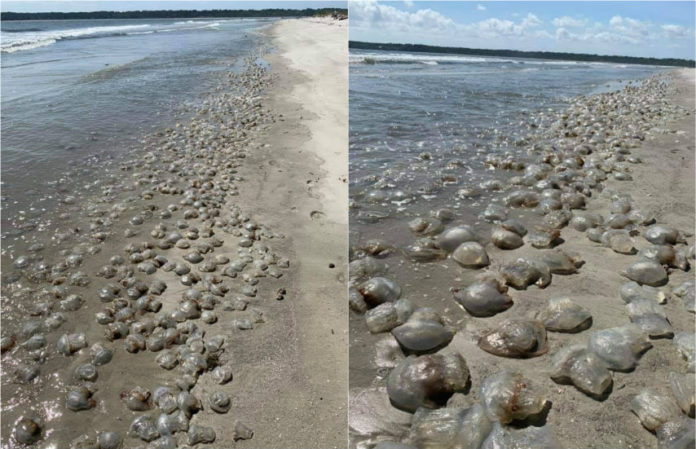
If you’ve been out enjoying our beautiful Lowcountry beaches lately, you’ve probably noticed all the washed-up jellyfish. There are jellyfhish everywhere. They’ve been especially bad on Hilton Head beaches recently, but northern Beaufort County has seen its share also.
They’re cannonball jellyfish, AKA jellyballs; and other than smelling a bit foul, there’s no danger here. According to the South Carolina Department of Natural Resources, jellyballs are the most common jellyfish in coastal South Carolina waters, and conditions have been just right this spring for large numbers to populate off our coastline; such conditions as warm waters and plenty of food.
Don’t worry if you see one washed ashore. Or even a few. Cannonball jellyfish are mostly harmless to humans. At worst, contact with them may cause the skin to itch slightly, or a minor eye irritation. They’re harmless, alive or dead.
The cannonball jellyfish gets its name from its shape resembling the shape and size of a cannonball. It has a bell that is of the shape of a dome, and this is what gives it its look. Unlike most species of jellies, this one lacks tentacles, but is equipped with oral arms underneath the body. These arms have a dual purpose; they help in propelling the jellyfish, and they aid in foraging.
Cannonball jellyfish are unable to control their movements, so they drift at the mercy of the ocean currents. So, when spring storms or strong offshore winds hit the area like we’ve seen in the last few weeks, the jellyballs was ashore aplenty.
Another fun fact, provided by the SCDNR, jellyballs are a fave of leatherback sea turtles. The turtles follow the jellies north this time of year and it’s commonly said in the Lowcountry that when you see the cannonball jellyfish start to wash up, sea turtles are right behind them.









